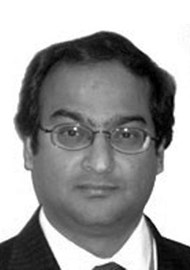Salivary gland tumours are relatively rare and occur with an incidence of 2.5-3% per 100,000 people. Histologically they are extremely diverse with several patterns; some of which overlap and exact diagnosis can be difficult. Indeed it can be difficult to identify benign from malignant. Additionally, there are various presentations depending on the gland – minor or one other paired major salivary glands. Benign tumours are the most common and pleomorphic adenomas and Warthins account for most. Mucoepidermoid carcinoma is the most common malignant tumour but there are various grades within it. A preoperative diagnosis is important to plan the therapeutic approach and plan surgery and plan regarding the sacrifice of various vital structures in close proximity to order to reduce recurrence. Preoperative fine needle aspiration (FNA) is an established method of preoperative diagnosis and considered to have a high degree of accuracy in diagnosis. However, it remains controversial when dealing with a tumour suspicious of malignancy as it is known to have low sensitivity and a high false positive rate. It is widely used as it is cheap, readily learnt, requires no special materials to perform, safe, quick with low morbidity and unlikely to alter the therapeutic course or surgery. This is a retrospective analysis of results from a University teaching hospital in Spain; 208 patients between January 2004 and December 2013 presented with salivary gland neoplasia, with 172 patients having a preoperative FNA, of which 153 were parotid and 19 submandibular glands. Interestingly, age presentation was 12-94 years and male-female ratio was 48/52%. Of the 172 FNAs, 126 (73%) were benign tumours, 18 (10.5%) were malignant and 28 (16%) were doubtful for malignancy. These cases (doubtful) went onto have open biopsies and were not included in either clear cut groups for accuracy. The authors report a sensitivity value of 60% only, i.e. 40% of malignant tumours were not diagnosed. It was still, however, accurate in diagnosis neoplasia but had poor accuracy in diagnosing malignancy accurately. It was a useful adjunct still for the reasons listed above and to differentiate tumours from inflammatory lesions. In summary, they advise it is still a useful tool and suggest associations with ultrasonography and using more experienced pathologists and radiologists that were based in the testing institution. This is a well-conducted retrospective analysis and serves as a reminder of the poor reliability of FNA for salivary gland tumours. It is also a useful read for preoperative planning of patients with salivary gland neoplasia.




